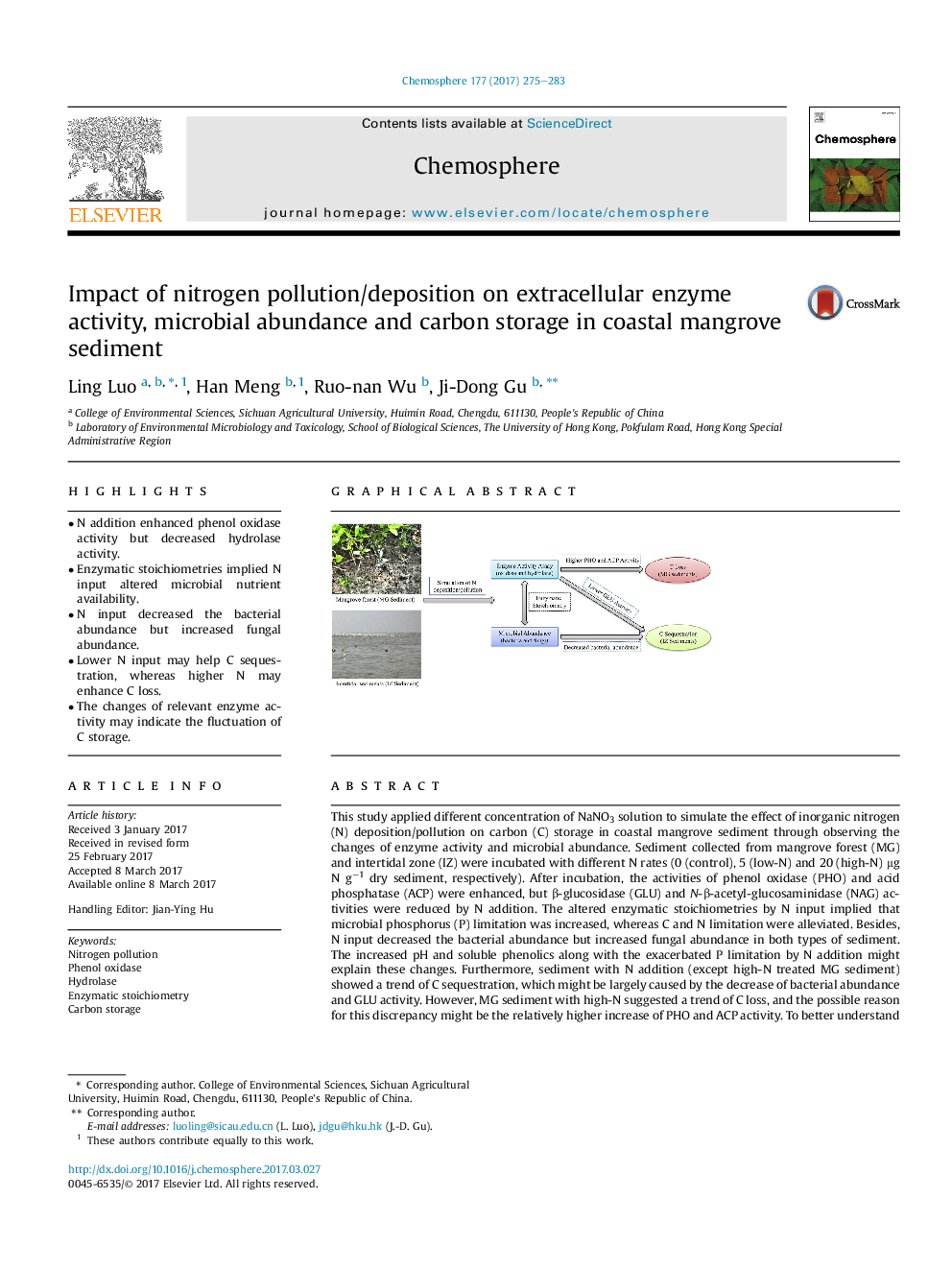| کد مقاله | کد نشریه | سال انتشار | مقاله انگلیسی | نسخه تمام متن |
|---|---|---|---|---|
| 5746302 | 1618794 | 2017 | 9 صفحه PDF | دانلود رایگان |
- N addition enhanced phenol oxidase activity but decreased hydrolase activity.
- Enzymatic stoichiometries implied N input altered microbial nutrient availability.
- N input decreased the bacterial abundance but increased fungal abundance.
- Lower N input may help C sequestration, whereas higher N may enhance C loss.
- The changes of relevant enzyme activity may indicate the fluctuation of C storage.
This study applied different concentration of NaNO3 solution to simulate the effect of inorganic nitrogen (N) deposition/pollution on carbon (C) storage in coastal mangrove sediment through observing the changes of enzyme activity and microbial abundance. Sediment collected from mangrove forest (MG) and intertidal zone (IZ) were incubated with different N rates (0 (control), 5 (low-N) and 20 (high-N) μg N gâ1 dry sediment, respectively). After incubation, the activities of phenol oxidase (PHO) and acid phosphatase (ACP) were enhanced, but β-glucosidase (GLU) and N-β-acetyl-glucosaminidase (NAG) activities were reduced by N addition. The altered enzymatic stoichiometries by N input implied that microbial phosphorus (P) limitation was increased, whereas C and N limitation were alleviated. Besides, N input decreased the bacterial abundance but increased fungal abundance in both types of sediment. The increased pH and soluble phenolics along with the exacerbated P limitation by N addition might explain these changes. Furthermore, sediment with N addition (except high-N treated MG sediment) showed a trend of C sequestration, which might be largely caused by the decrease of bacterial abundance and GLU activity. However, MG sediment with high-N suggested a trend of C loss, and the possible reason for this discrepancy might be the relatively higher increase of PHO and ACP activity. To better understand the influence of N deposition/pollution on C cycling, the long-term N effect on microorganisms, enzymes, and thus C storage should be paid more attention in the future.
High nitrogen (N) deposition/pollution in MG sediments may promote carbon (C) loss, while N input may help IZ sediments sequester C in a subtropical mangrove ecosystem. The decreased activity of β-glucosidase (GLU) and bacterial abundance may explain the C sequestration, while the higher activity of phenoloxidase (PHO) and acid phosphatase (ACP) may attribute to the C loss.358
Journal: Chemosphere - Volume 177, June 2017, Pages 275-283
